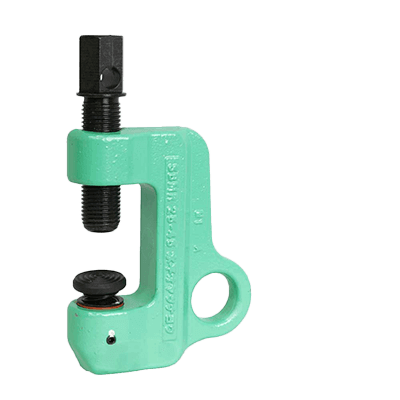What Is a Clamp?

Clamps are tools used to hold materials firmly in place so they do not move or come apart.
They come in a variety of shapes and sizes and are used in a wide range of applications including woodworking, metalworking, construction, and engineering; C-clamps, bar clamps, pipe clamps, spring clamps, toggle clamps, and wood clamps are some of the more common types.
Each clamp is designed to apply a specific type of grip or pressure. Various mechanisms such as screws, springs, and levers can be used to apply and release the clamp force.
Clamps are essential tools in many tasks that require securing objects, such as gluing, drilling, sawing, welding, and soldering. They are also used in many industrial and professional settings as well as in the home and DIY.
Uses of Clamps
The main purpose of clamps is to hold materials in place, typically to prevent them from moving or coming apart during certain tasks. Uses vary from construction and manufacturing to woodworking and home repair.
For example, in woodworking, a clamp may be used to hold two pieces of wood together while glue is applied and allowed to dry. In metalworking, clamps may be used to hold the workpiece in place during machining or welding.
Other uses include compressing or deforming materials, temporarily securing them, and applying pressure for testing and measuring.
Principle of Clamps
The principle of clamps is to hold and fix materials by applying force. It grips the object securely and stably, enabling more accurate and controlled operations.
Clamps usually consist of two or more jaws for gripping the object and a mechanism that applies force to the jaws to clamp the object. A secure and stable grip then applies pressure while allowing adjustment and release as needed.
Note that the principle of how force is applied to achieve this gripping action differs depending on the type. For example, C-type clamps use a screw mechanism to tighten the jaws, while spring clamps use a spring to grip. Toggle clamps use a lever mechanism to clamp the jaws, while bar clamps use a slide bar and screws to clamp the jaws.
Types of Clamps
There are many different types of clamps, each designed for a specific application or purpose.
Typical types of clamps include the following:
1. C-Shaped Clamp
This type of clamp has a C-shaped frame with a screw tightening and loosening mechanism. They are often used for woodworking and metalworking.
2. Bar Clamp
Clamps with a sliding bar that can be adjusted to fit a variety of sizes. They are often used for woodworking and furniture making.
3. Spring Clamp
Clamps that use spring force to clamp an object. They are often used to temporarily hold objects in place, such as for gluing or painting.
4. Pipe Clamp
Clamps for clamping pipes or cylindrical objects. They are often equipped with a screw mechanism for tightening or loosening.
5. Toggle Clamp
These clamps apply pressure to the object to be clamped by means of a lever mechanism. They are often used in machining and welding applications.
6. Wood Clamp
These clamps have two wooden jaws and are tightened by turning a screw. They are often used for woodworking.
7. Band Clamp
A clamp that encloses the material with a flexible band or strap. They are often used to clamp irregularly shaped items or to glue large surfaces.
8. Quick Release Clamp
These clamps are equipped with a lever, trigger, or other mechanism that allows the clamp to be released quickly and easily. They are often used in woodworking and metalworking.
How to Select a Clamp
There are several points to consider when selecting the right clamp for a particular application. By selecting the appropriate clamp for your application, you will be able to grip the workpiece securely and stably.
The specific points are as follows:
1. Size and Capacity
The size and capacity of the clamp must be commensurate with the size and weight of the object to be clamped. It is important to check the maximum opening width of the clamp, the depth of the throat, and the clamping force to ensure that it is suitable for the job.
2. Type of Material
The type of material to be clamped should be considered, as some clamps are suitable for certain materials and others are not. For example, clamps for metalworking may not be suitable for use on delicate and fragile materials such as glass or ceramic.
3. Type of Application
The nature of the work to be performed also influences the choice of clamp. For example, welding or soldering may require a clamp that can withstand high temperatures.
4. Accessibility
Accessibility of the clamp to the object should also be considered. If the object is in a tight or hard-to-reach location, flexible or angled jaws may be necessary.
5. Durability
The durability and quality of the clamp should also be considered, especially if it will be used frequently or in demanding applications. It is important to choose a clamp that is made of high-quality materials and has a strong, reliable mechanism.